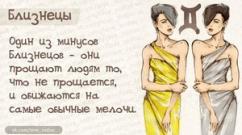MTR of Russia - elite soldiers of the General Staff of the Russian Federation. Brigades of the Special Forces of the Main Directorate of the General Staff of the Armed Forces of the Russian Federation
On February 27, Russia celebrates the Day of Special Operations Forces (MTR). On this day, five years ago, Russian military personnel began an operation to blockade units of the Armed Forces of Ukraine and ensure control over strategically important facilities in Crimea. This work was carried out by superbly equipped submachine gunners without insignia, in which the population immediately recognized Russian soldiers and met them as liberators.
Meanwhile, the Supreme Commander-in-Chief and the Ministry of Defense kept silent, hiding the obvious fact of the introduction of troops. Later, the Russian authorities admitted that part of the "Crimean contingent" was represented by servicemen of the Special Operations Forces. Their mission is still classified, but, most likely, they performed the most responsible and complex tasks. Some of the special forces were awarded the title of Hero of Russia by the decree of the President of the Russian Federation.
However, most foreign analysts are inclined to believe that MTRs were created in 2009-2013. In particular, 10 years ago, the Special Operations Forces Directorate was formed on the basis of the Senezh Special Forces Center (military unit No. 92154, Moscow region).
The list of the founding fathers of the MTR is unknown. However, it is believed that the most important role in the construction of the Special Operations Forces was played by the Chief of the General Staff of the RF Armed Forces, Valery Gerasimov, who, during Anatoly Serdyukov's tenure as Minister of Defense, worked as Deputy Chief of the General Staff (since December 2010). Nevertheless, it is obvious that Gerasimov was not the inspiration for the reform (at least he was not alone).
It is quite possible that the laurels of the creator of the MTR were entrusted to the current chief of the General Staff because of his article "The value of science in foresight", which was published in the journal "Military Industrial Courier" at the end of February 2013, when, presumably, the organizational formation of the Forces was completed. special operations.
“Asymmetric actions have become widespread, which make it possible to neutralize the enemy's superiority in armed struggle. These include the use of Special Operations Forces and the Internal Opposition to create a permanent front ... The ongoing changes are reflected in the doctrinal views of the leading countries of the world and are tested in military conflicts, ”says the material authored by Gerasimov.

In this material, Gerasimov does not hide the fact that the Ministry of Defense carefully studied the experience of the US MTR and other Western states, especially in the Middle East theater of military operations.
The knowledge gained helped the Russian Federation to create its own Special Operations Forces, taking into account domestic specifics.
In the United States, MTRs appeared in the second half of the 1980s. Now they exist in almost all large states, and more recently they exist even in Ukraine. Russia was somewhat late with this process, although the idea of creating the Special Operations Forces appeared during the war in Afghanistan. Then this issue came up on the agenda during the two Chechen campaigns.
However, before the arrival of Serdyukov, no changes took place. One of the most probable reasons is the resistance shown by the generals of the GRU.
The command of military intelligence did not want to lose experienced personnel and was afraid of losing its former influence in the system of the Armed Forces.
The Asymmetric Warfare Group (AWG), an advisory arm of the US Army, in a report entitled "A Guide to Russia's Next Generation Army" claims that the "point of no return" was the South Ossetian conflict, for which the Russian army was not well prepared.
The leadership of the Ministry of Defense of the Russian Federation finally realized the need to use small mobile formations in local conflicts, which are optimal for performing tasks in hot spots. According to the AWG, the backbone of the MTR consists of "battalion tactical groups" - highly maneuverable units sharpened for missions tens and hundreds of kilometers from the deployment point.
Expeditionary force
The special operations forces represent a single command structure that unites units of the army special forces of all types and branches of the RF Armed Forces. The MTR is directly subordinate to the head of the General Staff. In his study, a senior researcher at the Institute of the Ministry of Defense of Norway, Thor Buckvoll, estimated the strength of the Special Operations Forces at 14 thousand people, with 12 thousand being former employees of the GRU.
In general, the MTR fighters perform tasks that are largely similar to the functionality of military intelligence officers. We are talking about adjusting fire, obtaining intelligence information behind enemy lines, eliminating the leaders of gangs, sabotage and anti-sabotage activities.
The advantages of the Special Operations Forces include a wider (than that of the GRU) resource base, high efficiency and mobility.
In addition, the creation of the MTR made it possible to eliminate barriers in the use of special forces. For example, if it was necessary to use a special forces unit of the Navy in any conflict (for example, in Syria), then it was imperative to obtain consent from the command of the fleet. Now the entire army special forces are subordinate to the chief of the General Staff, who disposes of the fighters in agreement with the minister of defense and the president.
Such centralization is an adequate response to the lightning-fast changes in the military-political situation that are periodically observed near the borders of the Russian Federation. It makes no sense for modern Russia to transfer an airborne brigade with heavy equipment to the hotbed of threats. It is much more effective to be able to send a more modest in number and composition of special forces.

The most important specificity of the MTR, in addition to the highest level of combat training, is the ability to interact with the local population and allied formations. For example, in Syria, Russian special forces carried out tasks shoulder to shoulder with the Syrian army, the militia, the Shiite Hezbollah and various pro-Iranian groups. This component was lacking for the Soviet troops in Afghanistan and the federal units in Chechnya.
The main enemy of the MTR is terrorist groups in foreign countries.
Sara Fainberg, a lecturer at the Institute of National Security in Tel Aviv, in her article "Russian Expeditionary Forces in the Syrian Operation," reports that Russian special forces in the SAR have received an excellent opportunity to test their knowledge and accumulate unique experience.
According to Feinberg, there were 230-250 special forces in Syria at the height of hostilities. Moreover, the MTR fighters appeared in the Arab Republic before the official announcement of the start of the air operation (September 30, 2015). The servicemen performed reconnaissance tasks and identified targets for the Aerospace Forces.
According to the Ministry of Defense, two gunners of special forces were killed in the SAR - Captain Fyodor Zhuravlev (November 9, 2015) and Senior Lieutenant Alexander Prokhorenko (March 17, 2016). Both servicemen received state awards posthumously. Prokhorenko was awarded the title of Hero of Russia - being surrounded by militants, the MTR fighter called fire on himself. His feat caused a wave of admiration throughout the world.
The Special Operations Forces (SSO) are a relatively new entity in the structure of the Russian Armed Forces. Its formation began in 2009, during the army reform, and was completed in 2013. Over the past five years, the MTR took part in the Crimean operation and hostilities in Syria.
Experts and journalists call this date “the day of polite people” - it was on the night of February 27, 2014 that the transfer of Russian units to Crimea began.
The servicemen blocked the facilities of the Ukrainian Armed Forces on the peninsula and occupied administrative buildings.
The operation involved, in addition to the MTR units, marines, paratroopers and motorized riflemen. The professional work of the "polite people" made it possible to disarm the 30-thousandth group of Ukrainian troops practically without a single shot.
Meanwhile, the activities of the MTR is of a secret nature. The state has the right not to disclose information about the size and armament of the Special Operations Forces, and is not obliged to report on the results of operations and losses incurred.
"Asymmetric actions"
The special operations forces are a single structure, which includes units of the army special forces of different types and branches of the Armed Forces. The tasks of the MTR include conducting operations both on the territory of the Russian Federation and abroad.
The main control body of the Special Operations Forces - Command - is directly subordinate to the Chief of the General Staff of the RF Armed Forces (since November 9, 2012 - Valery Gerasimov).
- Chief of the General Staff Valery Gerasimov
- RIA News
Western think tanks show colossal interest in the activities of the MTR. Foreign experts believe that Russia has created the Special Operations Forces to more effectively conduct foreign expeditionary missions.
According to the West, the greatest contribution to the development of the MTR was made by Valery Gerasimov, for whom the image of the strategist of the "hybrid war" was entrenched.
Foreign experts base such conclusions on the article of the Chief of the General Staff of the RF Armed Forces "The value of science in foresight", which was published in the magazine "Military Industrial Courier" at the end of February 2013.
In his material, Gerasimov said that the Russian General Staff was studying the organization of military operations of American troops in Iraq and Afghanistan. The experience of the United States, according to Gerasimov, has demonstrated the need to change "existing models of operations and combat actions."
“Asymmetric actions have become widespread, making it possible to neutralize the enemy's superiority in armed struggle. These include the use of special operations forces and internal opposition to create a permanently operating front ... The ongoing changes are reflected in the doctrinal views of the leading countries of the world and are tested in military conflicts, "Gerasimov wrote.
View from the outside
Sarah Feinberg, a lecturer at the National Security Institute in Tel Aviv, in her article "Russian Expeditionary Forces in the Syrian Operation," argues that the idea of uniting "mobile intervention forces" arose during the war in Afghanistan (1979-1989). Then the Main Intelligence Directorate (GRU) of the USSR Ministry of Defense opposed the creation of the MTR. However, this idea reappeared on the agenda after two Chechen campaigns.
According to Feinberg, the use of the GRU special forces and other elite units in the North Caucasus was successful and made it possible to level out the shortcomings of the combat training of combined arms units.
At the same time, the Russian special forces experienced problems in planning and conducting operations due to lack of coordination between the power departments to which they were subordinate. In this regard, the need was realized to unite parts of the army special forces into a single command structure under the control of the Chief of the General Staff.

- Russian special forces at tactical exercises
- Press service of the Ministry of Defense
The Asymmetric Warfare Group (AWG), a consulting division of the US Army, in its report "A Guide to the Russian Army of the New Generation," reports that the MTR appeared as a result of optimization of the size and structure of the Russian Armed Forces during the period when the Ministry of Defense was headed by Anatoly Serdyukov (2007-2012).
The army reform was aimed at downsizing the formations (transition to a brigade system) and at creating so-called battalion tactical groups.
As the AWG experts clarify, "battalion tactical groups" are mobile, well-trained units that can be deployed hundreds of kilometers from the state border in a short time.
It follows from the AWG report that "battalion tactical groups" constitute the backbone of the MTR. According to analysts, these units were first used for the “annexation” of Crimea, then they were allegedly transferred to Donbass, and since 2015 have been operating in Syria.
The Asymmetric Warfare Group believes that when forming the MTR, Russia relied on the experience of foreign countries. However, the decision to create the Special Operations Forces was made after the South Ossetian conflict (August 2008).
In 2009, the Special Operations Forces Directorate was formed on the basis of the Senezh Special Forces Center (Moscow Region, military unit # 92154). The formation of the MTR as a single clearly working organism was completed in March 2013.
Consistency and professionalism
A senior researcher at the Institute of the Ministry of Defense of Norway, Thor Bukvoll, in the materials devoted to the elite units of the RF Armed Forces, notes that the main forces of the MTR are GRU officers. Of the 14 thousand soldiers of the Special Operations Forces, 12 thousand are military intelligence officers.
Foreign analysts agree that the arsenal of the MTR includes the most modern weapons, uniforms and the latest military equipment, including communications systems and drones. Russian special forces can perform tasks at any time of the day and in any natural and climatic conditions.

- Fighter of the diving unit of the Special Operations Forces
- Press service of the Ministry of Defense
Sarah Feinberg believes that Syria has become the main "military training camp" for the Russian MTR. The tasks of the special forces in the SAR include collecting intelligence, directing artillery and aerospace forces, eliminating the leaders of gangs, conducting assault operations and sabotage activities.
"Syria is indeed the first territory in which Russia has coordinated and large-scale deployed and organized control over a contingent of expeditionary forces, including the Special Operations Forces (SSO) and various categories of special forces," Feinberg notes in his article "Russian Expeditionary Forces in the Syrian Operation."
As the expert explained, the Syrian operation allows the RF MTR to hone their skills "without additional burden on the military budget." The size of the Russian special forces grouping in the SAR Feinberg is estimated at 230-250 people. According to her, the successful work of the MTR in Syria testifies to the "revival of Russian military art."
The presence of Russian special forces in Syria was first announced by the deputy chief of staff of the Central Military District, Alexander Dvornikov, on March 23, 2016. Nevertheless, Russian and foreign experts are confident that the MTR operated in Syria from the very beginning of the operation (September 30, 2015) or from the summer of 2015.
“I will not hide the fact that units of our Special Operations Forces are also operating in Syria. They carry out additional reconnaissance of objects for strikes by Russian aviation, are engaged in guiding aircraft to targets in remote areas, and solve other special tasks, "Dvornikov said in an interview with Rossiyskaya Gazeta.
On December 11, 2016, the Russia 24 TV channel showed footage of the participation of Special Forces servicemen in the battles in Syrian Aleppo. It is also known from the media that the MTR fighters participated in the liberation of Palmyra.
According to official data, during the entire period of the operation in the SAR, two special forces gunners were killed - Captain Fyodor Zhuravlev (November 9, 2015) and Senior Lieutenant Alexander Prokhorenko (March 17, 2016). By order of the President of the Russian Federation Vladimir Putin, Zhuravlev was awarded the Order of Kutuzov posthumously, Prokhorenko was awarded the title of Hero of Russia, also posthumously.
In May 2017, information about the feat of the MTR group in the Aleppo province was partially declassified.
16 Russian special forces, who were engaged in directing aviation fire, entered the battle against 300 militants of Jabhat al-Nusra *.
The commandos acted in coordination with government forces. However, the Syrians retreated in turmoil and left the detachment without cover. Russian servicemen repulsed several attacks and, when it got dark, mined the approaches to their positions.
“The density of the fire was high. But it was scary only in the first minutes, and then a banal routine begins, ”said one of the officers.

- Mortar crew of the MTR is firing at terrorists
- Frame: video RUPTLY
The fighters held their positions for two days and were able to leave without loss. During the battle, the commandos destroyed several armored vehicles and a tank. The commander of the group, Danila (not named), who received the title of Hero of Russia, noted that the well-coordinated professional actions of his subordinates were the key to success.
Alexei Golubev, a participant in counterterrorism operations in the North Caucasus, in an interview with RT, said that the MTR of Russia is rightfully called the most trained elite formation in the Armed Forces of the Russian Federation. In his opinion, the success of the operation in Syria would have been impossible without the Special Operations Forces.
“The classified nature of the MTR's activities is due to the fact that the fighters work outside of Russia. In Syria, special forces are thrown into the rear of the enemy for target designation of the Aerospace Forces. In my opinion, this is the most difficult and dangerous job. And, as far as I can tell, our guys are coping with it, ”Golubev emphasized.
*"Jabhat Fath al-Sham" ("Front al-Nusra", "Jabhat al-Nusra") - the organization was recognized as terrorist by the decision of the Supreme Court of the Russian Federation of December 29, 2014.
Military service at all times enjoyed great honor and respect in almost any existing state. After all, it is the troops that are the force that can protect the country from external aggression. It should be noted that the history of the development of military art stretches back from ancient times. Many modern principles of building armies were laid down in ancient Greece and Rome. With the passage of time and gradual technical evolution, new devices and technologies were included in the activities of the military. This has led to the fact that in the 21st century, the art of killing in most cases is realized remotely, by means of computers, missiles, drones, etc. However, there are tasks that are simply impossible to cope with remotely or with the help of machines. That is, it is necessary to involve people with a special level of training. Military of this type exist in every state. As a rule, they are combined into subunits. In the Russian Federation, there is a similar formation within the Armed Forces. It is engaged in the implementation of special functions, and also has its own structure, staff and features, which will be discussed later in the article.
The concept of special units
The special operations forces of the Russian Federation are special units in the structure of the Armed Forces, as already mentioned earlier. But few people understand what the category of "special units" is in general. As a rule, formations of this kind are created as part of the army, since it is in the conditions of hostilities that situations very often arise that require a special approach. But there are also special units in internal services, for example, the police, etc. Taking this into account, we can conclude that special units are formations in the system of bodies involved in the comprehensive defense of the state, on whose shoulders it is the execution of the most dangerous and complex the essence of the missions.

Russian "analogue"
The Special Operations Forces is a unit directly part of It was developed in 2009 as a result of the global reform of the entire defense sector of the state. The unit is assigned special tasks, which will be discussed in more detail later in the article. It should be noted that the Russian special operations forces are directly subordinate to the head of the RF Armed Forces. To date, the exact number of the special unit is unknown, since it is guarded by a special regime. As for the issue of equipping the MTR, then the command approached quite professionally. In the activities of the unit, all available technical innovations in the field of military affairs are used. It should be noted that the staff of the special operations forces operates on the basis of a special service.

The main tasks of the department
The special operations forces of the Russian Federation are highly mobile units. Their employees have special military training, which increases the experience in performing important and dangerous tasks. In accordance with this, we can say that the main areas of work of the MTR have a rather specific character. They, as a rule, are implemented in peacetime, wartime, both abroad and on the territory of the Russian Federation. It should be noted that the Russian special operations forces are a young unit. Many aspects and immediate goals of his work are still not fully understood. However, we can say with confidence that the special operations forces are engaged in the implementation of the task of the same name, which, in turn, has features.

Special operation concept
The presented term characterizes the military process. It differs from ordinary operations in the specifics of the conduct, goals, and methods of activity of its subjects. First of all, it should be noted that a special operation is carried out by military units to protect the interests of the state in a particular territory. At the same time, such actions are considered special because it is simply impossible to implement them using conventional methods and means. That is, the subjective composition of special operations is almost always highly qualified fighters of well-trained and highly mobile units. The methodological basis of their activities in most cases is the secrecy and secrecy of any actions. For this, servicemen of special units undergo special psychological, combat, fire and other types of training. They are trained to operate both as part of a mobile group and individually behind enemy lines. The most common special operations targets are:
Sabotage;
Sabotage;
Subversive activities, etc.

The history of the creation of the MTR
It was previously indicated that the special operations forces are a relatively young unit. It did not exist in its modern form before. Its creation is preceded by a rather long history. The control body of the MTR was created in 2009, when the general reform of the Armed Forces of the Russian Federation began. Gradually, the structure of the new division developed and expanded. By 2012, the command of the special operations forces was created. It consisted of about nine special brigades. However, the actual creation of special operations forces began in 2013. At this time, the command of this formation began to implement planned work aimed at bringing the structure of these units into proper form. According to Valery Gerasimenko, General of the Army, by March 23, 2013, the personnel of the Special Operations Forces had already been actually formed. At this time, it was being prepared for direct use both on the territory of the Russian Federation and abroad. Around the end of April 2013, the Russian Armed Forces held exercises that were aimed at practicing practical actions in conditions as close as possible to real ones.

Subdivision structure
The special operations forces of the Russian Federation have their own internal structure, due to the need for a prompt response to situations, the solution of which is within the scope of the unit. At the same time, the composition of the SSO, in turn, has an internal hierarchy, which makes it possible to distribute functional responsibilities between individual structural elements. Thus, the special operations forces of the Russian Federation consist of the following elements:
- Direct command located in the Moscow region.
- Special center "Snezh", which is also located in the Moscow region. It should be noted that today this center is one of the main parts of the division presented in the article. Its task is not only to train soldiers, but also to conduct special operations. Therefore, "Snezh" has a structure consisting of departments of different directions of activity, which will be discussed below.
- Special training center. Direct training of personnel takes place in this subdivision. Here, in fact, Russian special operations forces are born. In addition, fighters from other special units of the Russian Federation undergo training and retraining at the center.
- A fighting center similar to "Snezh" is "Cuba" or "Zazaborie", as it is commonly called.
Of course, it is possible that there are other special centers, but information about them can be strictly classified. This level of mystery around the MTR is not accidental. After all, the soldiers of this unit carry out operations that are far from unambiguous. It should be noted that the SEAL division, popular all over the world, "Navy seals", did not officially exist at the first stages of its development either. Only with the passage of time was the fact of its creation and real activity revealed.

The structure of the special center "Snezh"
In order to at least roughly understand how the special operations forces of the RF Armed Forces work, it is necessary to consider in more detail the composition of the Snezh special purpose center, which was mentioned earlier in the article. It should be noted that in accordance with the tasks assigned to the MTR, the structure of the center includes a number of special departments. Each of them is responsible for maintaining combat training and performing specific functions. One of these divisions is the airborne division. The fighters serving in it, in accordance with the name, constantly replenish the arsenal of ways to penetrate the enemy's rear directly through the air. That is, there is a strong emphasis on parachute jumping, as well as paragliding. The fighters of this department are comparable to the employees, but their activities and methods of landing are kept secret.
There is also a dedicated mining unit. Its fighters specialize in activities and survival in appropriate conditions. As we know, conducting special operations in the mountains has an increased level of risk, which necessitates the presence of special training of fighters. The same requirements are put forward for employees who work in the department for the destruction and seizure of enemy infrastructure, that is, buildings, headquarters, bunkers, etc.
The special operations department of the Naval Forces is inherently multipurpose. Most often it is called marine. This formation is a competitor to the "SEALs" of the United States of America. Because its activity is based on the fulfillment of the task in the waters of lakes, rivers and seas. As a rule, fighters do their work from watercraft. In addition, the functional tasks of the department include carrying out reconnaissance operations, sabotage actions on enemy water bodies and those located directly on the shore.
Equally important and functional is the department specializing in the protection of high-ranking government officials. In this case, its functions in some aspects overlap with the activities of the Federal Security Service.
Additional structural departments of the special center "Snezh" are withdrawal and support units. In the first case, we are talking about formations that are engaged in the withdrawal of individual MTR groups from the rear of the enemy or the location of the operation. Today, the withdrawal can be carried out both by air and by land and water. The rest of the center's divisions are engaged in material support and communications. It should be noted that on the territory of "Snezh" there are special complexes that are used to provide fighters and maintain their combat form.
Russian special operations forces: how to get there?
Some young people would like to get into this unit. To date, the process of recruiting for service in the special operations forces of the Russian Federation is not exactly known. The composition of the unit, according to unclassified data, is staffed by contract servicemen. That is, all employees, without exception, are professional fighters, and not people who undergo military service. In addition, many specialists of the unit get into it after graduating from special military educational institutions, in which certain faculties are provided. These are today the Ryazan Higher Airborne Command School, and nevertheless, it is possible that the personnel in the MTR is also replenished by recruiting people who are already serving in the units of the Armed Forces of the Russian Federation.
Unit conflicts
To date, special operations forces have officially been involved in the territory of the state of Syria. In this country, the unit was engaged in ground reconnaissance of the terrain to ensure the conduct of airstrikes. At the same time, the activities of the unit were confirmed by the fact, which was also covered in the media. According to the official version, in March 2016, near Palmyra, MTR fighters liberated the city. Due to the superior forces of the enemy, one of the employees of the special forces was killed. In addition to military operations in Syria, there are many unofficial reports about the activities of the MTR in other military conflicts, for example, in the North Caucasus in the process of fighting the Islamists. The most controversial is the fact of the participation of the fighters of the said unit in the Crimean crisis.

Special unit emblem
The special operations forces of Russia, the emblem of which is presented in the article, have special symbols. It is, first of all, represented by a common sign that exists among all military formations in Russia. The emblem of the RF SSO is a gray wreath, at the top of which there is a reduced emblem of the Russian Armed Forces, namely: a two-headed eagle of gold color. In the center of the special operations forces sign is a bow, the bowstring of which is pulled by an arrow with wings. This symbol also has a gold color.
So, in this article, photos of the special operations forces of the Russian Federation were presented. We also found out the main tasks and composition of this unit. Let's hope that soon there will be more information about the activities of the MTR, which will allow us to judge the quality of the work of this unit.
From the night of February 27, 2014 and in the following days, the baptism of fire of the MTR took place in Crimea - today it is well-known and officially recognized. The first pancake did not come out lumpy. Units of the Armed Forces of Ukraine in the places of their deployment in Crimea were blocked, and all the strategic objects of the peninsula were occupied by people in camouflage uniforms without identification marks and insignia, who behaved "politely" towards the local population. They politely followed the disarmament of the garrisons of the Ukrainian army - almost without shots, except for a few AFU servicemen that were released into the air for ostracism.
It was then that this expression appeared - "polite people". A little later, when Russian Defense Minister Sergei Shoigu, speaking about the “involvement” of Russian military personnel in the events in Ukraine, said: “It is difficult to look for a black cat in a dark room, especially if it is not there. It is all the more stupid if this cat is smart, brave and polite ”- this peculiar status has become almost official.
“The most important thing for us is not muscle strength, but still the head. The scout works with his head: only he does not hit the bottles and bricks, but thinks with it. Any scout of technical intelligence or another is, first of all, the mind. That is, the intellect of a person, ”says Alexander Musienko, Colonel of the Special Forces of the GRU General Staff.
Served in the MTR career officers and contract soldiers. Everyone is a specialist not only in military affairs: an academic degree is not uncommon here, and knowledge of foreign languages is mandatory. They call themselves scouts: this best explains both the nature of the unit's tasks and the veil of secrecy that surrounds it. Active fighters are prohibited from communicating with the press.
It is due to their intelligence and their unshakable reputation that they not only prevented in Crimea in 2014. bloodshed, but almost no shots were fired (not counting those fired into the air to excuse them). Although in the use of various weapons, these people have no equal. But in this case, their reputation worked out better than a bullet.
“The special operations forces are, in banal language speaking, a kind of pilot project for the development of the army of the future. Two or three years will pass, and all the Spreznaz brigades that exist will accept this new tactics, new methods of training, new equipment, new weapons. This will already be a rather large and formidable force, "said Oleg Martyanov, a member of the board of the Military-Industrial Commission of the Russian Federation (the first commander of the MTR).
The structure of the Special Operations Forces (MTR)
Izvestia found out back in 2013. structure of the Special Operations Forces (MTR).
According to a source of Izvestia in military circles, in addition to the special forces of the Ministry of Defense, the MTR will include the special forces of the FSB, the Ministry of Internal Affairs, as well as units of the FSO, FSIN and FSKN.
We are talking about the creation of a headquarters command in the General Staff of the Armed Forces, which, if necessary, will be transferred to the operational management of the special forces of all security services and troops, - explained the interlocutor of Izvestia.
Participation in the MTR will require adjusting the combat training program of special forces in order to unify their capabilities and increase interaction.
The special forces of the FSIN, for example, need training not only in suppressing riots in colonies and prisons, but also in blocking sabotage groups, ”Izvestia's interlocutor gave an example.
He explained that the MTR will be able to conduct operations both outside the country - for this they will use the special forces of the Ministry of Defense "Senezh", the Airborne Forces, special forces brigades (special forces of the GRU), as well as the special forces of the Federal Drug Control Service "Thunder" - and inside - they will use here already internal troops, units of the FSIN, special forces of the FSB and other services.
Options for such actions are protection from attacks on Russian citizens in other countries, the evacuation of embassies, important officials, as well as "special tasks", which mean pinpoint mini-operations to destroy the leaders of militants, infrastructure or weapons, leaders of other countries.
Inside the country, the opposite is true - the MTR will have to counteract saboteurs, block the landing, and protect strategic infrastructure facilities such as power plants, command posts, government agencies, and communication centers.
The command of the Special Operations Forces is one of the structures of the General Staff with a permanent staff.
The military unit near Solnechnogorsk, conventionally called "Senezh" (after the name of the nearby lake), is a special-purpose unit of the Main Intelligence Directorate (GRU). On the basis of it, the Special Operations Directorate was created, subordinate to the Chief of the General Staff of the Armed Forces of the Russian Federation. “Detachment“ Senezh ”has always been the most closed unit of the army, - says reserve colonel V. - This is the elite of military intelligence, whose fighters are capable of performing tasks of any degree of danger. Only officers and contract servicemen serve in the detachment. Each of them is prepared to achieve certain goals, including with uncharacteristic methods and methods of combat operations. This is a professional of the highest standard. It is no coincidence that the Special Operations Forces were formed on the basis of this unit. "
The composition of the Special Operations Forces, as well as all its activities, are secret. Apparently, the command of the MTR is operatively subordinate to all combat highly professional special forces of various law enforcement agencies (Spetsnaz) and some units as combat support and transportation, depending on the specific military task.
If we talk about Spetsnaz, then the lists of such units are in the public domain, but, again, without confirmation from the official bodies. Almost for every special unit there are informal sites organized, apparently, by retirees of these units. Naturally, all this, without references to official bodies.
Subdivisions of the Special Forces of the Russian Federation of various departments, as components of the MTR.
1st component of MTR from MO
Units and formations of the Special Forces of the Main Directorate of the General Staff of the Armed Forces of the Russian Federation (Special Forces of the Main Directorate of the General Staff). Approx. Recently, the GRU began to be called the GU.
Chief of the Main Directorate of the General Staff of the Armed Forces of the Russian Federation, Lieutenant General Igor Valentinovich Korobov - Deputy Chief of the General Staff of the Armed Forces of the Russian Federation, was appointed to the post on February 2, 2016. He was awarded 5 orders and a medal "For Courage".
Before him, the Office was headed by Colonel-General Igor Dmitrievich Sergun in 2012-2015. By the nature of his work, he is a co-author in planning, providing intelligence and supporting the secrecy regime of at least two well-known operations of the RF Armed Forces in Crimea and Syria. Much to his chagrin, at the beginning of the year, he suddenly died in the prime of his life. For the officially announced reason - from a heart attack.
Data on the command of the MTR was not found. The first commander is Colonel Oleg Martyanov.
Brigades of the Special Forces of the Main Directorate of the General Staff of the Armed Forces of the Russian Federation:
2nd separate special purpose brigade - Western Military District (Pskov). Formed on the basis of directives of the General Staff of the Armed Forces of the USSR and the commander of the LMO troops in the period from September 17, 1962 to March 1963.
3rd Separate Guards Brigade of Special Purpose - Central Military District (Togliatti). Formed in 1966 by the directive of the Commander-in-Chief of the GSVG on the funds of the 26th separate battalion of the Special Forces in the Werder garrison with the participation of personnel from the 27th separate battalion of the Special Forces of the Northern Group of Forces, the 48th and 166th separate reconnaissance battalions.
10th Separate Special Purpose Brigade - Southern Military District (Molkino farm, Krasnodar Territory). It was again formed in SKVO (YuVO) in May 2003.
14th Separate Special Forces Brigade - Eastern Military District. (Ussuriysk). Formed on December 1, 1963 Over 200 officers, sergeants and soldiers participated in the hostilities in Afghanistan as part of special forces. 12 officers, 36 sergeants and soldiers were killed. From January to April 1995, the combined special forces detachment took part in restoring constitutional order in Chechnya.
16th Separate Special Purpose Brigade - Western Military District (Tambov). The Moscow Military District was formed on January 1, 1963.
22nd Separate Guards Special Forces Brigade - Southern Military District. Formed on July 21, 1976 by order of the commander of the Central Asian Military District in the city of Kapchagai, Kazakh SSR. In March 1985, the unit was redeployed to the city of Lashkargah of the Republic of Afghanistan and took part in the Afghan war. It is the only military formation that received the name of the Guards after the Great Patriotic War. In 1989-1992, the compound was deployed in Azerbaijan. In June 1992, the unit was redeployed to the territory of the Russian Federation and included in the troops of the North Caucasian Military District. From November 1992 to August 1994, the operational group of the compound was involved in maintaining the state of emergency and separating the parties in the Ossetian-Ingush interethnic conflict. From December 1, 1994 to the operational group of the compound took part in hostilities on the territory of the Chechen Republic.
24th Separate Special Purpose Brigade - Central Military District (Novosibirsk). Formed on November 1, 1977 on the basis of the 18th separate special-purpose company.
346th separate special purpose brigade. Cool. Kabardino Balkaria. Southern Military District.
25th separate special-purpose regiment, Stavropol. Southern Military District Created in 2012 to ensure the security of the 2014 Sochi Olympics. Deployed in Stavropol on the territory of the headquarters of the 49th Army.
Special Forces Center of the Central Service Station "Senezh" military unit 92154, Solnechnogorsk, Moscow Region, Western Military District.
Marine reconnaissance points MRP SPN GRU- one for each fleet.
42nd MRP SPN (Russky Island, Novy Dzhigit Bay, near Vladivostok, Pacific Fleet) military unit 59190;
420th MRP of the Special Forces (Zverosovkhoz settlement, near Murmansk, Northern Fleet);
137th (former 431st) MRP Special Forces in the Black Sea Fleet (Tuapse), military unit 51212;
561st MRP SPN (Parusnoe settlement, near Baltiysk, Kaliningrad region, Baltic Fleet).
According to the state of peacetime, the MCI includes 124 people. Of these, 56 are fighters, the rest are technical personnel. The share of technical personnel in the units of the naval special forces is significantly higher than in the special forces of the GRU. The fighters are divided into groups of 14 people, which are autonomous combat units. Those, in turn, include smaller groups of 6 people: 1 officer, 1 midshipman and 4 sailors. A separate article will be published in more detail.
The number of units and formations of the Special Forces of the GRU
Currently, the GRU spetsnaz consists of eight separate special-purpose brigades, one regiment, and four GRU naval reconnaissance posts. According to various sources, the number of units and formations of the Special Forces of the Main Directorate of the General Staff currently ranges from 6 to 15 thousand people. In addition to units and formations of the Special Forces, the GRU has general-purpose troops numbering about 25 thousand people. But as you understand, all these data are unofficial and not the fact that they are correct. Consider these for some guidance.
It should be noted that it is impossible to compare the soldiers and officers of the Special Forces with the military of the Ground Forces. Just as they do not compare, for example, a stiletto with a sword. These are tools for completely different tasks. Each special forces soldier, having undergone many years of training according to unique methods, is many times superior to a conventional war: in terms of the resilience of the military spirit, in terms of physical training, they are fluent in hand-to-hand combat techniques, in possession of the skills to use most types of weapons on the battlefield. In addition, these people have the highest tactical training and are aimed at performing the assigned tasks in any case, finding individual and optimal solutions for them each time. They are trained to act both in a group and alone. It follows from this that, despite a certain small number, special forces, if used correctly, are a super effective military tool.
Special Forces of the Airborne Forces, as an integral part of the MTR and the Airborne Forces, as a possible reserve for the MTR and a base for the creation of the Rapid Reaction Troops.
45th Separate Guards Order of Kutuzov, Order of Alexander Nevsky, Special Purpose Brigade. Formed by 2015 on the basis of the 45th regiment of the Special Forces of the Airborne Forces 2 (military unit 28337) Kubinka, Moscow Region, Western Military District.
I admit that, if necessary, if the special operation is large-scale, the KSSO may be subordinated to additional units of the Airborne Forces. This is indirectly indicated by plans to increase the number of Airborne Forces.
A special-purpose brigade and three separate reconnaissance battalions joined the Airborne Forces in 2014, Lt. Col. Evgeny Meshkov, an official representative of the Airborne Forces, told reporters.
"As part of the Airborne Forces, a special-purpose brigade was created (Moscow region) and three separate reconnaissance battalions were formed in two airborne assault battalions (76th Pskov and 7th Novorossiysk) and one airborne division (106th Tulskaya)."
2014 it was reported that the formation of peacekeeping forces in the Airborne Forces was completed, the number of which exceeded 5 thousand people.
In addition, a source in the General Staff back in the summer of 2014. told TASS about plans to increase the number of Airborne Forces by about half - up to 72 thousand people. These plans are expected to be fully implemented in 2019.
Shamanov added that the rapid reaction troops being created in Russia, the basis of which will be the Airborne Forces, may include army aviation. He explained that the attack drones, which it is planned to equip the Airborne Forces, will allow reconnaissance units to operate deep behind enemy lines ...
It should be noted that the Airborne Forces are essentially rapid reaction forces. It is possible that they would finally receive such a status, in addition to increasing the staff, it is necessary to update the fleet of military equipment and increase the number of transport aircraft, with the addition of units of the Ground Forces with heavy equipment. All these steps are planned in the coming years, up to the creation of new heavy transport aircraft by 2025 in an amount sufficient for the simultaneous transfer of several hundred tanks, several tanks in each. And here it is possible and necessary to command the MTR to coordinate the various types of troops.
Text at the beginning of the post from articles:
The army of the future: how Special Operations Forces perform the toughest missions
The structure of the Special Operations Forces (MTR)













